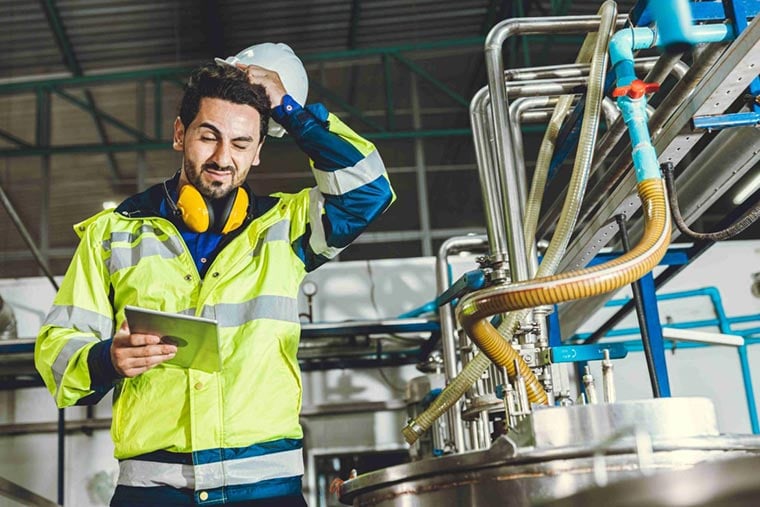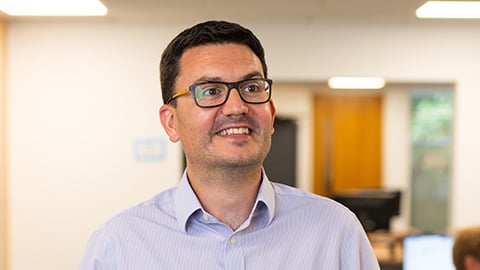
Ensuring resilience in your manufacturing capabilities
February 2022
By Mathew Price, Principal Consultant at 42T

Once a manufacturing process has been optimised to achieve its rated operating efficiency, the business focus quickly shifts from optimising the process to running it in production; irrespective of whether that process is entirely manual, fully automated, or somewhere in between.
All too frequently, crucial learnings are not recorded and the deep understanding of the process is lost.
Some processes that are running today are now so old that there is no-one left in the company who originally worked to optimise them. They might run perfectly well at the moment, but no-one really understands them. There is often little appetite from the business to retroactively gain a deeper understanding of these legacy processes because “it’s worked well for years, so why change it?”.
And therein lies the problem. Things do change, often unexpectedly, often outside of our control and sometimes drastically.
Customers change what they want. Governments change legislation. Businesses change strategy. Technology moves on. People move on.
It’s highly likely that you’ll understand the normal variation to the inputs and how to manage them to control the outputs. But what if something more critical changes?
To use the food and drinks industry as an example:
- What if government legislation forces you to reduce the amount of palm oil used for fried foods? How does the smoke point of alternative oils affect your frying temperatures and times? How does that impact other parts of the process?
- What if the cost of gas increases so much that it forces you to use electric ovens for your baked foods? How does the different humidity affect the baking, and how does that affect any proving processes prior to baking?
- What if customers decide en masse that they want their food products to contain oat milk instead of cow’s milk? How does the viscosity of alternative milks affect your ingredient-mixing processes?
And some more general examples:
- What if any processes rely on the experience/expertise of a time-served individual who is leaving the business? How did they manage the process to achieve the operating efficiency?
- What if you can’t recruit the people you need, because of changes to legislation (e.g. Brexit)? Or there’s a new/big employer in the local area offering better work? Or people want to work from home nowadays? How will you achieve the operating efficiency with a smaller or less-skilled workforce?
If you don’t currently have a detailed understanding of how your processes operate today, how quickly will you be able to respond to major changes?
On the occasions when the knowledge of a process is well-documented, it tends to only cover the one process in isolation and doesn’t address the effect on those upstream and downstream in the entire end-to-end process.
For example, there’s no value in making one process run faster (e.g. cooking) if it makes another one run slower (e.g. cooling) and in-turn causes the entire end-to-end process to run at a lower efficiency.
There are also many instances where processes are not currently achieving their rated operating efficiency, or never have done. They are often run with sub-optimal output because no-one knows how to improve it - because there isn’t a detailed understanding.
So what might you do about this? And how might you mitigate the vulnerability to some of these undesirable but inevitable factors?
As a starting point you could:
- Define the transformation that takes place at each step in the process.
- Identify the measures and set-points to ensure that each step operates correctly.
- Identify the upstream and downstream dependencies that exist.
- Asses the implications if any of those process relationships move outside of their acceptable limits.
Only once your existing process has been properly understood can you start to identify the specific vulnerabilities and take steps to mitigate them. You can then ask yourself questions like:
- How might a specific transformation be achieved more efficiently using more current process technology?
- How might real-time process control eliminate undesirable process variation?
The answers to these questions will likely lead you towards making several improvements, both big and small. These improvements should make the entire end-to-end process more resilient and make your business less vulnerable to major changes - whatever they might be!
Example
42 Technology has a wealth of experience helping our clients in a range of industry sectors optimise and future-poof their manufacturing operations.
In one recent project we supported our client by carrying out an in-depth investigation into the extent to which some aged assets could be extended beyond their original capabilities to support a major evolution of the established product in response to changing customer expectations.
Particular attention had to be paid to aspects of the end-to-end process where any change would lead to requalification of the line, or where process reliability would be detrimentally impacted.
The result enabled our client to establish a clear roadmap to extend the operational life of the assets, supporting the manufacture of the new product variant with only low cost and low risk modifications required.

If you would like to discuss how 42T might support you in ensuring resilience within your manufacturing processes, then please contact Mathew:
mathew.price@42T.com | +44 (0)1480 302700 | www.linkedin.com/in/mathew-price-42t/
Mathew Price is an experienced engineer with a broad background in product development, mechanical engineering and manufacturing. He has worked for several product manufacturers and an engineering consultancy and gained significant experience in the full lifecycle development of products for the consumer, industrial and energy industries.
Share this article:
Related Articles

Manufacturing & Automation, Industrial
How to bring sensing in manufacturing out of the lab and onto the line

Manufacturing & Automation
Digitalisation in manufacturing - building on the foundations of good data

Manufacturing & Automation
Food & beverage industry - trends to be aware of in 2024

What will you ask us today?
We believe in asking the right questions to drive innovation; when we know the right questions, we generate the ideas to answer them.

